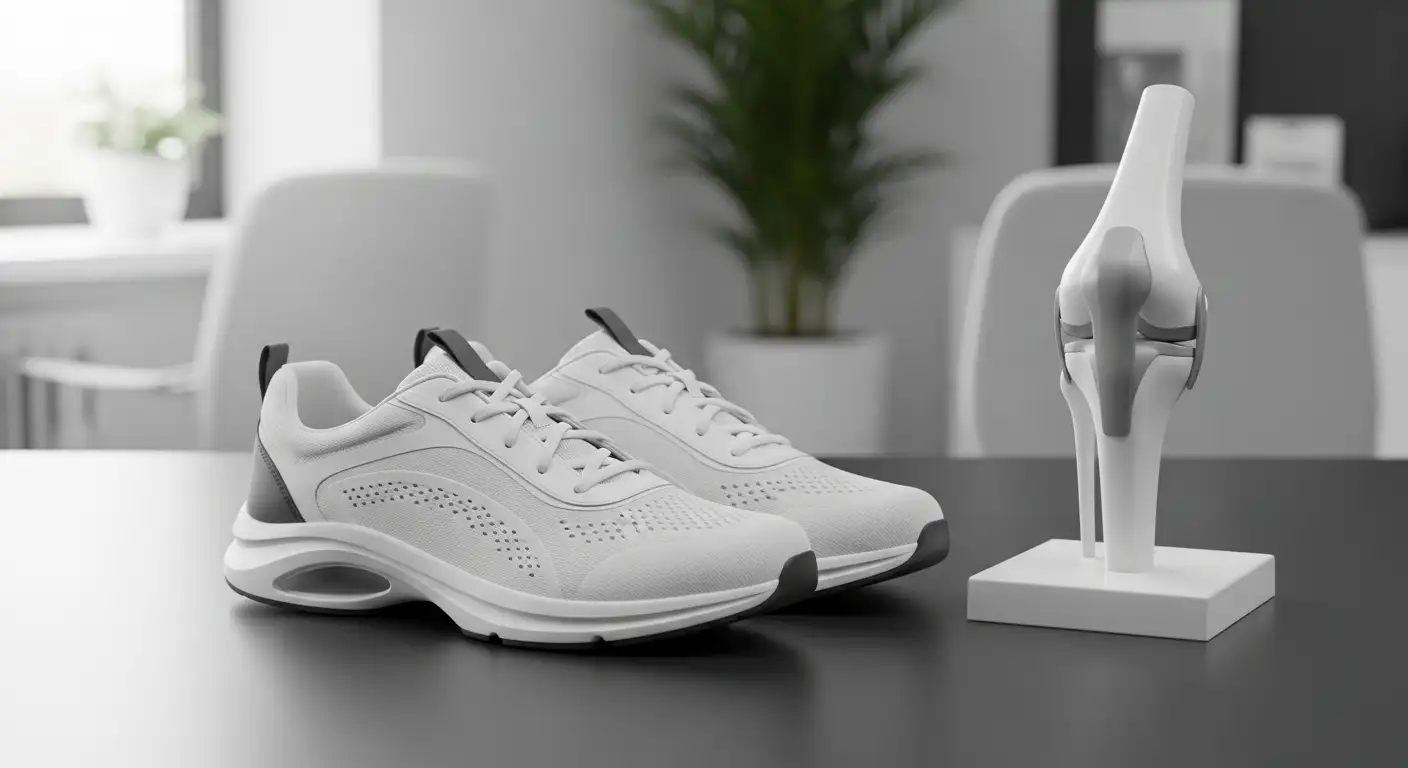Understanding Patellar Instability
Patellar instability involves issues with the patella (kneecap), which can lead to pain and discomfort in the knee joint. Understanding the types, symptoms, and diagnosis of this condition is essential for effective management.

Types of Patellar Instability
There are two primary types of patellar instability:
Both types can influence knee function and overall mobility, causing discomfort during activities.
Type of InstabilityDescriptionTraumatic Patellar DislocationFull dislocation of the patella due to an injury.Chronic Patellar InstabilityPartial sliding of the patella leading to repeated dislocations.
Symptoms and Diagnosis
Patients experiencing patellar instability may present with a range of symptoms. Common indicators include:
Diagnosis is typically conducted through a thorough medical history and physical examination. X-rays or MRI may be utilized to evaluate the kneecap and surrounding structures. It’s important to note that MRI is generally not recommended immediately post-injury to allow for initial healing processes to occur. For further assessment of knee conditions, other related topics such as knee hyperextension test and locking knees may provide additional insights.
In summary, understanding the types of patellar instability, along with recognizing the symptoms and proper diagnostic procedures, is crucial in addressing issues related to lateral patellar tilt effectively. Treatment options may include rest, bracing, physical therapy, or even surgical interventions depending on individual cases [1].
Factors Contributing to Lateral Patellar Tilt
Lateral patellar tilt is often influenced by several anatomical and structural factors that can contribute to patellar instability. Understanding these factors can aid in effective treatment and management of knee pain.
Role of Medial Patellofemoral Ligament (MPFL)
The medial patellofemoral ligament (MPFL) plays a crucial role in stabilizing the patella. It serves as the primary restraint against lateral patellar instability, contributing approximately 50 to 60% of resistance against lateral translation of the patella. Any disruption or injury to the MPFL can lead to increased lateral patellar instability, making it a significant factor in knee health [2].
Once the patella starts to engage with the trochlea at about 20 to 30 degrees of knee flexion, the bony anatomy begins to provide more stability, as the patella nestles in the trochlear groove. Understanding the function of the MPFL is essential in diagnosing and addressing conditions associated with medial knee anatomy.
FactorContribution to StabilizationMPFL50-60% resistance to lateral movement
Lateral Soft Tissue Restraints
Lateral soft tissue restraints, including ligaments and tendons surrounding the knee, also play a significant role in maintaining patellar alignment. These tissues support the patella in its natural tracking during movements like walking or running. When these soft tissues weaken or become damaged, the risk of lateral patellar tilt and overall instability increases.
Several anatomical factors can further exacerbate the condition. For instance, increased femoral anteversion (greater than 20 degrees) can apply a laterally directed force on the patella, raising the likelihood of dislocation. Additionally, external tibial torsion can contribute to this instability, as the normal childhood alignment of about 15 degrees can shift towards abnormal rotation [2].
The knee's alignment is also important. An alignment greater than the normal 6 degrees of valgus can push the patella laterally out of its groove. Conditions such as miserable malalignment syndrome, characterized by increased femoral anteversion and genu valgus, further increase the risks associated with lateral patellar tilt.
For individuals experiencing symptoms related to knee instability, understanding these factors can guide appropriate interventions and treatment options. Evaluating measures like the patellar tilt angle can provide insights into the underlying conditions contributing to knee pain. For more information on related topics, explore pages about quad tendonitis and locking knees.
Anatomical Factors in Patellar Instability
Understanding the anatomical factors contributing to lateral patellar tilt is essential for diagnosing and treating knee pain effectively. Two significant elements to consider are femoral anteversion and valgus alignment, along with associated conditions like trochlear dysplasia.
Femoral Anteversion and Patellar Dislocation
Femoral anteversion refers to the inward rotation of the femur. Increased femoral anteversion, particularly more than 20 degrees, significantly raises the risk of lateral patellar dislocation. This condition creates a strong laterally directed force across the patella, leading to instability [2].
The alignment of the tibia can also play a role; normal tibial external rotation during childhood is roughly 15 degrees. Deviations from this norm can further exacerbate lateral patellar instability.
ConditionRisk FactorDescriptionIncreased Femoral Anteversion> 20 degreesHigher risk of lateral dislocation due to applied force on patella.Tibial External Torsion> 15 degreesCan contribute to instability if abnormal.
Valgus Alignment and Trochlear Dysplasia
Valgus alignment—where the knee angle deviates outward—can also impact patellar stability. An increased valgus angle at the knee beyond the normal alignment of approximately 6 degrees forces the patella out of its trochlear groove, which may lead to instability. Conditions like miserable malalignment syndrome combine factors such as increased femoral anteversion, genu valgus, and external tibial torsion, raising the risk for patellar instability [2].
Furthermore, an increased tibial tubercle-trochlear groove (TT-TG) distance, which indicates a lateralized tibial tuberosity or a medialized trochlear groove, predisposes individuals to lateral patellar subluxation and instability. A TT-TG distance exceeding 20 mm is nearly always associated with patellar instability [3].
Alignment ConditionNormal MeasurementDescriptionNormal Valgus~6 degreesStandard knee alignment.Increased TT-TG Distance> 20 mmAssociated with higher risk of lateral patellar instability.
Addressing these anatomical factors is crucial for effective treatment and management options for individuals suffering from knee pain. For further insights on related syndromes, see the section on patellofemoral pain association.
Patellofemoral Pain Association
Syndromes Related to Knee Pain
Lateral patellar tilt is one of the syndromes associated with patellofemoral pain and is a known cause of knee discomfort in athletes. Other related conditions include anterior knee pain, patellofemoral malalignment, chondromalacia patellae, patellar hypermobility, and lateral pressure phenomenon [4].
Tightness in the lateral aspect of the knee, especially in the iliotibial band (ITB), can predispose an individual to anterior knee pain. Stretching the fibrous tissue on the outer side of the kneecap and ITB may help alleviate some symptoms [4].
SyndromeDescriptionSymptomsLateral Patellar TiltMaltracking of the patella towards the lateral sidePain on the outer kneeAnterior Knee PainPain occurring in the front of the kneeSharp pain during activitiesPatellofemoral MalalignmentAbnormal alignment of the patellaSwelling, pain with movementChondromalacia PatellaeSoftening and breakdown of the cartilage on the underside of the kneecapAching or grinding sensationPatellar HypermobilityExcessive movement of the patellaInstability, clicking sound
Treatment and Management Options
Non-operative treatment strategies for managing patellofemoral issues are successful 85 percent of the time. Key management options include activity modification, physical therapy, and patience, which are essential to increasing the success rate.
Common non-surgical interventions include:
In cases where conservative treatments fail or where there are traumatic injuries, operatic management might be necessary. Surgical options for patellofemoral problems may include:
Effective management of lateral patellar tilt and associated syndromes is critical for restoring knee function and reducing discomfort in affected individuals. For more information about knee anatomy and related conditions, you can explore our articles on medial knee anatomy and locking knees.
Surgical Interventions for Patellar Instability
Understanding the best approach to treating lateral patellar tilt is crucial for those affected by patellar instability. This often involves evaluating both non-operative and operative treatments.
Non-operative vs. Operative Treatments
Non-operative treatments for lateral patellar tilt include physical therapy, bracing, and activity modification. These methods are generally recommended for patients without significant structural instability. Physical therapy focuses on strengthening the muscles around the knee, improving flexibility, and correcting any biomechanical issues.
In contrast, operative treatments may be necessary in cases of recurrent dislocations or severe instability. Surgical options often involve procedures to reduce lateral tension and tighten medial restraints, leading to improved stability. Studies show that the recurrence of dislocation after the first episode can be as high as 40 percent without surgical intervention, while post-surgery recurrence rates drop to below 10 percent [5].
Treatment TypeDescriptionIndicationNon-operativePhysical therapy, bracing, activity modificationMild to moderate instabilityOperativeSurgical procedures to tighten medial restraintsRecurrent dislocations, severe instability
Outcome Expectations and Recovery
The expected outcomes following intervention depend heavily on the type of treatment. Non-surgical options usually lead to improved knee function and decreased pain over time, especially when coupled with a dedicated rehabilitation program.
For patients undergoing surgical procedures, recovery times can vary considerably based on the extent of the surgery.
Procedure TypeRecovery TimelineAthletic Activity TimelineSoft tissue procedure6 to 8 weeks10 to 12 weeksBone procedure8 to 12 weeks12 weeks or longer
Surgical interventions are typically performed in an outpatient setting, which allows for a more manageable recovery process [5]. Patients are encouraged to follow a guided rehabilitation plan to maximize healing and restore function effectively.
Imaging techniques such as MRI play a vital role in assessing patellar maltracking and helping to formulate an appropriate treatment strategy [6]. Standardized protocols for evaluating cartilage health are essential in providing accurate information regarding the condition of the patellofemoral joint, which significantly impacts recovery expectations.
For those concerned about knee pain, understanding the balance between non-operative and surgical options is crucial in managing lateral patellar tilt effectively.
Imaging and Structural Assessment
Imaging plays a crucial role in assessing lateral patellar tilt and related knee conditions. MRI is particularly effective in evaluating patellar maltracking and identifying anatomical factors contributing to patellar instability.
MRI Evaluation for Patellar Maltracking
MRI is the preferred imaging technique for assessing patellar maltracking. It is capable of detecting factors such as trochlear dysplasia, lateral patellar tilt, and patella alta. Additionally, MRI can reveal structural changes like osteochondral defects that are associated with maltracking.
Key parameters that MRI can measure include:
Increased tibial tubercle-trochlear groove distance (TT-TG) is a known risk factor for lateral patellar subluxation. A TT-TG distance greater than 20 mm is usually associated with patellar instability [7].
ParameterMeasurementRisk FactorTT-TG Distance>20 mmPatellar instabilityInsall–Salvati Ratio>1.3Patella altaCaton–Deschamps Index≥1.2Patella alta
Relationship Between Patellar Alignment and Osteoarthritis
The alignment of the patella significantly influences the development of osteoarthritis in the knee joint. Structural changes related to patellar maltracking can lead to uneven distribution of stress across the joint surfaces. This can result in wear and tear of cartilage over time.
MRI findings may reveal injuries to medial patellar stabilizers, such as the medial patellar retinaculum and the medial patellofemoral ligament (MPFL), which often correlate with prior lateral patellar dislocations [7].
Recognizing the signs of maltracking via imaging allows for appropriate treatment strategies to prevent the progression of osteoarthritis and improve patient outcomes. For more insights, explore additional topics related to knee pain and anatomy such as infrapatellar bursa, medial knee anatomy, and quad tendonitis.
References
[2]:
[3]:
[4]:
[5]:
[6]:
[7]:





